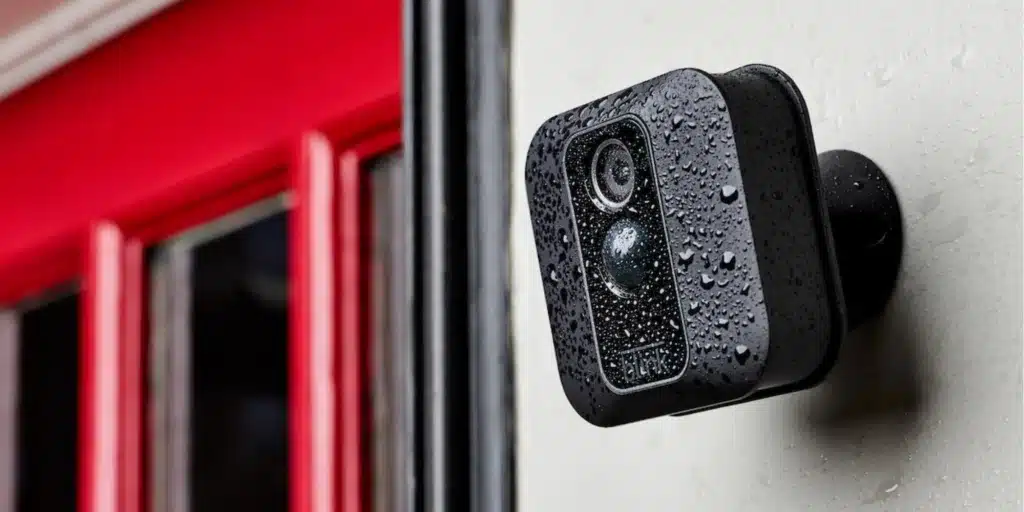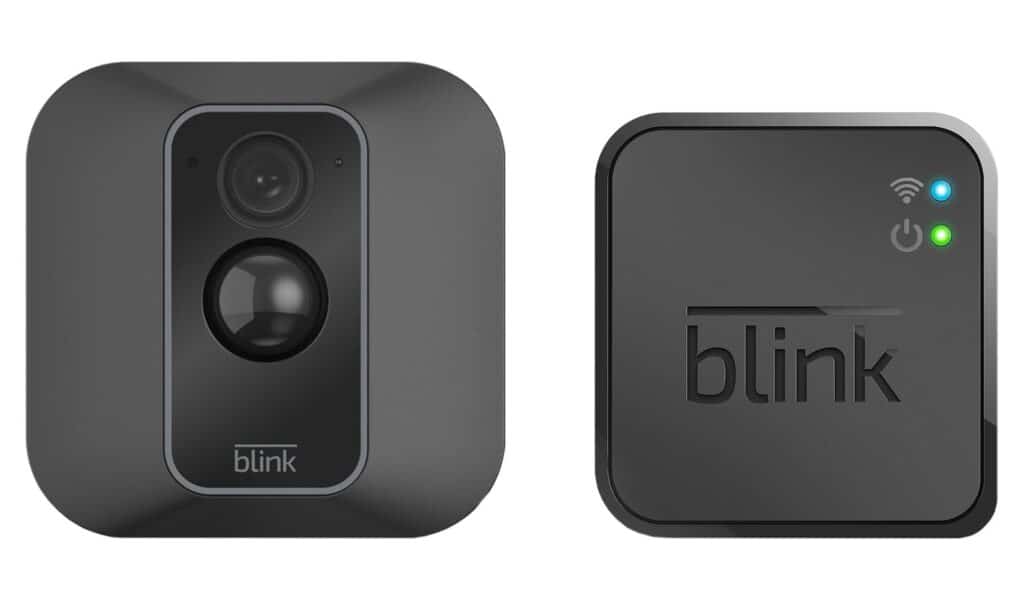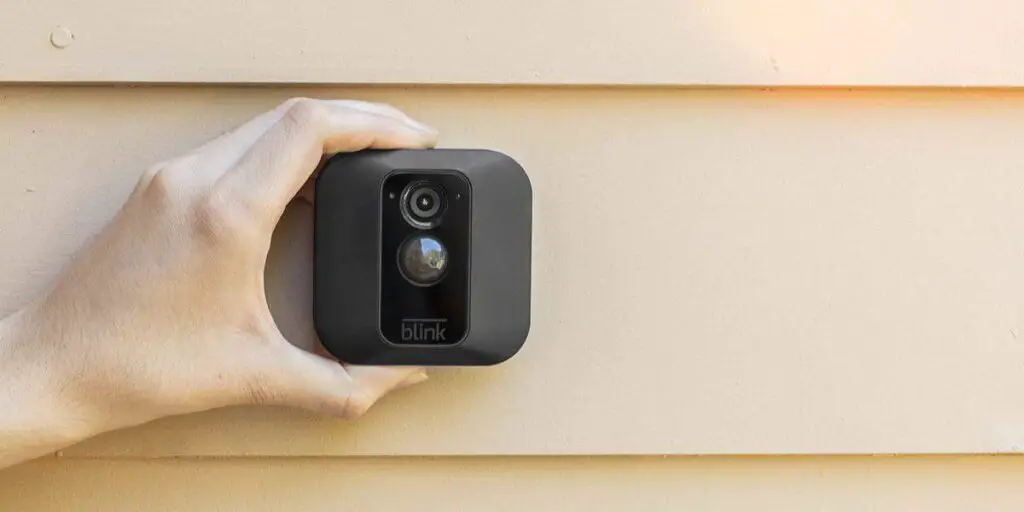Introduction
Can You Turn Off Motion Detection On Blink Camera: Homeowners prioritize home security, driving demand for smart surveillance solutions. One of the most popular solutions is the Blink Camera system owing to its price, ease of installation, and seamless interaction with modern technologies. Motion detection allows the Blink Camera to efficiently monitor home activities, giving owners piece of mind.
However, as with any technology, questions often arise about the extent of control and customization that users have over these systems, particularly regarding motion detection. Motion detection can be an essential feature for some, but it may not be desirable or necessary in all circumstances. Concerns about privacy, false alarms, and power consumption have prompted users to seek ways to deactivate motion detection temporarily or permanently.
Turning off motion detection may have security and privacy consequences, which we will examine. Understanding the Blink Camera’s motion detection settings’ flexibility can help homeowners choose surveillance. This approach can also illuminate smart home security and privacy discussions.

Does Blink only record when motion is detected?
Blink cameras are not always recording. They use motion detection to trigger recording, and stop when the motion stops or the maximum recording time is reached. However, users can manually start a live video stream from the camera at any time using the “Live View” feature.
Motion-activated blink cameras record footage. This distinguishes Blink as an energy- and storage-efficient home surveillance solution. The camera records a few-second video clip when motion is detected in its range of vision.
Recording based on motion is useful in lots of ways. It also makes less video data than systems that record all the time, so you don’t need as much storage room. Because it only records when motion is detected, Blink is a useful and cheap option. This is because it saves battery life and network traffic. The device that records when it senses movements also lets the owners know about important events, like possible break-ins or strange behavior on the property.
Video clips give concise, actionable security proof. Despite its motion-based recording, Blink doesn’t record everything. To decrease false alerts from blowing leaves or passing cars, the camera’s motion detecting feature can be adjusted.
Will Blink record motion if disarmed?
What Does Blink Camera Do When Disarmed? When the Blink system is disarmed, the cameras are inactive and not actively monitoring any activity. The system will not initiate recordings or send alerts for detected motion in this mode.
Disarmed blink cameras don’t record motion. Disarming the camera puts it in standby mode, where it won’t watch for motion or record video. When disarmed, a Blink camera will not record or alert the user to motion events in its field of vision.
Disarming the camera lets users regulate its on/off status. This feature is handy when homeowners or residents are in the monitored area but don’t want to be recorded. Disabling the camera gives users privacy and peace of mind that their activities won’t be recorded.
Arming the Blink camera activates it to detect motion within its range. Once armed, the camera will capture short video clips when motion is detected and alert the user’s smartphone or tablet. Users can arm and deactivate the camera manually or schedule it. The camera may automatically arm when they leave and disable when they return, ensuring that recording and monitoring only occur when needed.
How does motion detection work on Blink?
To detect motion, cameras other than the Mini are sensitive to the size of an object’s heat as it appears in the view. The Blink Mini detects visual differences between one moment and the next.
Motion detection on Blink cameras is a fundamental and sophisticated feature that allows the system to capture video footage when movement is detected within its field of view. The technology behind Blink’s motion detection involves a combination of hardware and software elements, creating a reliable and efficient system for home security.
Infrared Sensors
Blink cameras are equipped with passive infrared (PIR) sensors. These sensors detect changes in heat signatures within their coverage area. When a person, animal, or object moves within the camera’s range, it emits heat, and the PIR sensors identify this temperature variation.
Motion Analysis
The camera’s software examines motion patterns when the PIR sensors detect a temperature change. Shadows, leaves, and people walking can be distinguished by the program. Motion analysis ensures the camera only reacts to essential events and reduces false alerts from trivial activity.
Motion Trigger
The camera starts to record when the motion analysis finds movement that meets the set criteria for being important. Most of the time, Blink cameras record short video clips that focus on the action that caused the motion detection.
Alerts and Notifications
Simultaneously, the Blink camera sends alerts and notifications to the user’s connected devices, such as smartphones or tablets. These notifications inform users of the detected motion event and provide them with the option to view the recorded video clip in real-time.
How far away does Blink detect motion?
What’s the maximum distance Blink cameras sense motion detection? The maximum motion detection range is approximately 20 feet for all blink cameras. Some factors that influence motion detection are the app sensitivity setting, camera placement, object size, infrared illumination and object temperature.
The distance at which Blink cameras can detect motion depends on various factors, including the camera model, the specific environment, and the sensitivity settings. As of my last update in September 2021, the typical motion detection range for Blink cameras is around 20 to 30 feet (6 to 9 meters). However, it is essential to note that this range is a general estimate and can vary based on different conditions.
Camera Model
Different Blink camera models may have slightly different motion detection capabilities. Some models might have enhanced sensors or features that allow for longer detection ranges.
Environment
The environment in which the camera is placed can affect the motion detection range. For instance, outdoor cameras may have a more extended detection range compared to indoor cameras due to the larger space and potential movement in the surroundings.
Sensitivity Settings
Blink cameras offer users the flexibility to adjust motion detection sensitivity. Higher sensitivity settings can increase the range but may also lead to more false alarms caused by minor movements like pets or insects.
Obstructions
Obstacles between the camera and the motion source, such as walls, furniture, or vegetation, can impact the camera’s ability to detect motion accurately at longer distances.
Lighting Conditions
For motion recognition to work, there must be enough light. Not enough light can make it harder for the camera to identify motion, especially at night or when there isn’t much light.
How do I get my blink camera to detect motion?
You can also enable or disable Motion Detection within Device Settings. Go to Device Settings and then tap Motion Settings. The first setting is Motion Detection. The Motion Detection setting allows you to change your camera’s motion detection without having to Arm your system.
There are a few important steps you need to take to make sure your Blink camera is set up and configured correctly before it can sense motion. Follow these steps to turn on motion sensing and get the most out of it:
Camera Placement
Choose an optimal location for your Blink camera. Ensure it is mounted securely and positioned to cover the area you want to monitor for motion. Avoid obstructions like walls, furniture, or plants that could hinder motion detection.
Power and Sync
Make sure your Blink camera is properly powered (using batteries or a power adapter) and synced with the Blink Sync Module or Blink Mini (depending on the camera model you have). Follow the manufacturer’s instructions to set up your camera and sync it with the Blink system.
Open the Blink App
Download and open the Blink app on your smartphone or tablet. Ensure your Blink system is connected to the app via Wi-Fi or cellular data.
Enable Motion Detection
In the Blink app, go to the camera settings for the specific camera you want to enable motion detection on. Look for the “Motion Detection” or “Arming” option and toggle it on to activate motion detection for that camera.
Adjust Sensitivity Settings
Depending on the type of your camera, you may be able to change how sensitive the motion detection is. Find the slider for sharpness in the camera settings and change it to your liking. A higher sensitivity can pick up more motion, but it may also make fake alarms more likely.
Set Activity Zones (Optional)
Some Blink camera models allow you to set custom activity zones, defining specific areas where you want the camera to detect motion. This can be particularly useful for avoiding unnecessary alerts from irrelevant movement.
Test Motion Detection
Once motion detection is enabled and configured, test the camera by walking within its field of view. Verify that the camera captures the motion and sends you an alert/notification on your device.

Will my Blink camera still record clips if motion detection is turned off?
The primary function of motion detection is to trigger the camera to start recording when it detects movement within its field of view. When motion detection is disabled, the camera will remain inactive and will not initiate any recording or capture video footage, even if there is movement in its vicinity.
Turning off motion detection on your Blink camera can be useful in specific situations, such as when you are at home and do not wish to be recorded, or if you want to conserve battery life and storage space when motion detection is not necessary. When motion detection is disabled, the camera will also not send any motion alerts or notifications to your connected devices, as it will not detect or respond to motion events.
If you want the Blink camera to resume recording and motion detection, you can easily enable the motion detection feature through the Blink app or camera settings. Once motion detection is turned back on, the camera will once again start capturing video clips when it detects motion, and it will send alerts and notifications to your connected devices accordingly.
What are the reasons to turn off motion detection on a Blink camera?
There are times when it makes sense to turn off motion detection on a Blink camera. This gives users more control and freedom over their home security system. Here are some strong reasons to think about turning off motion detection:
Privacy Concerns
When you or your family members are at home, you may prefer to disable motion detection to respect your privacy. This ensures that the camera does not record any activities while you are in the monitored area, giving you a sense of privacy and peace of mind.
Avoiding False Alarms
Some environments may have frequent movements that are not of security concern, such as pets, passing vehicles, or rustling vegetation. By turning off motion detection in these situations, you can prevent unnecessary false alarms that might be triggered by these non-threatening activities.
Battery Conservation
Motion detection can consume more battery power compared to an idle state. If you are using battery-powered Blink cameras and don’t require constant monitoring, turning off motion detection can help extend the camera’s battery life.
Limiting Recording Storage
If you have limited recording storage capacity, disabling motion detection can be a practical way to conserve space. It ensures that the camera only records when necessary, saving valuable storage for critical events.
Scheduled Monitoring
Some users may prefer to have the camera active only during specific hours or days. By turning off motion detection, users can set up schedules for when the camera should be armed and disarmed, aligning with their routine and security needs.
Camera Maintenance
Disabling motion detection can be useful during camera maintenance or adjustments. It prevents unnecessary recordings while you make changes to the camera’s placement or settings.
Can I still use other features of my Blink camera when motion detection is off?
Yes, even if you turn off motion tracking, you can still use other parts of your Blink camera. Turning off motion recognition does not affect how you can use the camera’s other features. When motion tracking is turned off, you can still use the following key features:
Live View
You can still access the live view of your Blink camera through the Blink app or the sync module. This allows you to manually view the camera’s feed in real-time, providing a live stream of the monitored area.
Two-Way Audio
If your Blink camera has two-way audio capabilities, you can communicate with people near the camera through the app, irrespective of whether motion detection is enabled or disabled.
Manual Recording
Even with motion detection turned off, you can manually trigger recording through the Blink app. This is particularly useful when you want to record a specific event or activity without relying on motion detection.
Camera Settings
You retain full access to the camera’s settings, including adjusting camera sensitivity, enabling/disabling activity zones, and managing camera status (armed or disarmed).
Alerts for Other Events
While motion alerts will not be sent when motion detection is off, you can still receive other types of alerts, such as low battery notifications or Wi-Fi connectivity issues.
Scheduling
If your Blink camera supports scheduling, you can continue to use this feature to automate when the camera should be armed or disarmed, regardless of the motion detection status.
Does disabling motion detection affect the camera’s other functionalities?
Most of the time, turning off motion detection on a camera doesn’t have a clear effect on how it works in other ways. The main job of motion recognition is to make the camera record videos when it sees movement in its own field of view. If you turn off motion recognition, the camera will not react to motion events, but all of its other features and functions will still work as they should. Other functions are not changed in the following ways:
Live View
You can still access the live view of the camera through the app or associated sync module. Disabling motion detection does not hinder your ability to view the camera’s feed in real-time.
Two-Way Audio
If your camera supports two-way audio, you can still communicate with individuals near the camera through the app, even if motion detection is disabled.
Manual Recording
Even with motion detection turned off, you can initiate manual recording through the app. This allows you to record specific events or activities when desired.
Camera Settings
You retain full access to the camera’s settings, including sensitivity adjustments, activity zone management, and scheduling options.
Alerts for Other Events
While motion alerts will not be sent when motion detection is off, other types of alerts (e.g., low battery warnings or Wi-Fi connectivity issues) will still function normally.
Video Clips and Storage
Disabling motion detection will not affect the retrieval and viewing of existing video clips stored in the Blink cloud or local storage (if applicable).

Conclusion
The Blink Camera system indeed allows users to customize their motion detection settings, offering both temporary and permanent deactivation options. This flexibility empowers homeowners to tailor their surveillance to their specific needs, striking a balance between security and privacy concerns. By examining the functionalities of the Blink Camera, the user interface, and the documentation provided by the manufacturer, we have determined that users can adjust motion detection sensitivity, create custom activity zones, and even disable motion alerts altogether.
This level of customization can be helpful in a number of situations, such as when people are at home, at certain times, or in places where motion recognition might send out false alarms. Being able to turn off motion detection can give homes more privacy, but it’s important to think about the possible downsides. By turning off motion tracking completely, security may not be as vigilant, leaving holes in the system that thieves could use.
It is very important to find the right mix between privacy and safety. When making these choices, homeowners should think about their own needs and risks. As smart home technologies continue to improve, it is important for makers to make controls for motion detection and other security features clear and easy to use. By doing this, users can easily control their surveillance systems, making sure that they protect their property and don’t invade their privacy.

